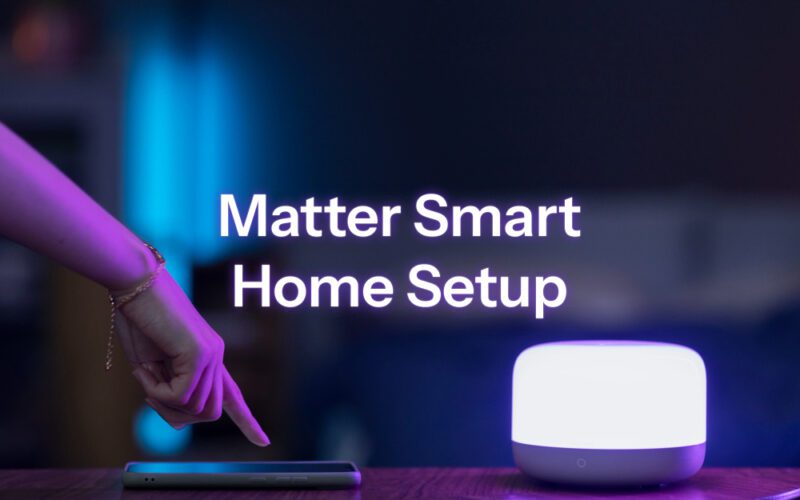Matter smart home setup for beginners isn’t just another tech trend that will fade away. Instead, Matter smart home setup for beginners represents the most significant breakthrough in smart home technology since WiFi connectivity. As major tech giants like Apple, Google, and Amazon unite behind this revolutionary protocol, understanding Matter smart home setup for beginners has become essential. Therefore, this comprehensive guide will help you navigate the Matter ecosystem. Moreover, it ensures you can create a seamless smart home experience that actually works.
What is Matter Smart Home?
Traditional smart home devices operate in isolated ecosystems that rarely communicate with each other. However, Matter changes this fundamental limitation by creating a universal language for smart home devices. Furthermore, it allows products from different manufacturers to work together seamlessly. Additionally, Matter 2.0 introduces enhanced energy management capabilities and expanded device categories.
Think of Matter as the universal translator for your smart home devices. Instead of needing separate apps for every device, Matter enables unified control through your preferred platform. Moreover, whether you use Apple HomeKit, Google Home, or Amazon Alexa, Matter devices work with all of them simultaneously.
Smart Home Matter Protocol Benefits in 2025
The smart home market has struggled with fragmentation for years. Previously, choosing a smart lock meant committing to a specific ecosystem that might not work with your preferred voice assistant. However, Matter eliminates these compatibility concerns entirely. Furthermore, it provides unprecedented interoperability across brands and platforms.
Matter 2.0 specifically addresses energy efficiency and sustainability concerns. Additionally, it introduces new device categories including energy management systems, solar panels, and battery storage solutions. Consequently, homeowners can now create comprehensive energy-efficient smart homes that reduce utility costs while improving convenience.
The protocol’s security architecture surpasses traditional smart home standards. Moreover, it implements end-to-end encryption and regular security updates across all connected devices. Therefore, Matter provides enterprise-level security for residential applications.
Essential Matter Compatible Devices for Setup
Smart Lighting Systems: Matter-compatible smart bulbs and switches provide the foundation for most smart home setups. Furthermore, they offer instant responsiveness and seamless integration with all major platforms. Additionally, these devices support advanced features like circadian lighting and energy monitoring.
Climate Control Solutions: Matter thermostats and smart HVAC systems optimize energy usage while maintaining comfort. Moreover, they learn your preferences and automatically adjust settings based on occupancy and weather conditions. Consequently, users typically see 15-20% reductions in energy costs.
Security and Access Control: Matter-enabled smart locks, cameras, and security systems provide comprehensive home protection. Additionally, they integrate with existing security platforms while offering enhanced privacy controls. Therefore, homeowners can maintain security without sacrificing convenience.
Energy Management Devices: Matter 2.0’s energy management capabilities include smart outlets, energy monitors, and grid integration systems. Furthermore, these devices provide real-time energy usage data and automated load balancing. As a result, they help optimize energy consumption and reduce utility costs.
Step-by-Step Matter Smart Home Implementation
Begin by assessing your current smart home infrastructure and identifying compatibility gaps. Additionally, prioritize devices that address your most pressing needs—lighting, security, or energy management. Therefore, start with one category and gradually expand your Matter ecosystem.
Choose a primary control platform that aligns with your existing devices and preferences. However, remember that Matter’s universal compatibility means you’re not locked into a single ecosystem. Moreover, you can easily switch platforms or use multiple controllers simultaneously without replacing devices.
Install devices gradually to avoid overwhelming your network infrastructure. Furthermore, test each device thoroughly before adding the next component. Additionally, document your device configurations and network settings for future troubleshooting. Consequently, this methodical approach ensures stable system performance.
The Matter Alliance provides comprehensive setup guides and compatibility databases. Moreover, they offer troubleshooting resources and regular updates on new device certifications. Therefore, this official resource ensures you’re following best practices for implementation.
Getting Started with Your Matter Home
Evaluate your home’s WiFi infrastructure before purchasing Matter devices. Additionally, ensure your network can handle the increased device load and data traffic. Therefore, consider upgrading to WiFi 6 or 6E routers for optimal performance.
Select devices from reputable manufacturers who demonstrate long-term commitment to Matter support. Furthermore, prioritize companies that provide regular firmware updates and responsive customer support. Additionally, check device reviews specifically focusing on Matter implementation quality.
Budget planning should account for both device costs and potential infrastructure upgrades. However, Matter’s interoperability means you can mix brands to find optimal price-performance ratios. Moreover, the Thread Group offers guidance on mesh network requirements for larger installations.
Plan your device placement carefully to optimize Thread mesh network performance. Additionally, ensure adequate coverage throughout your home for reliable connectivity. Therefore, consider Thread border routers and range extenders for larger properties.
Advanced Features and Future Expansion
Matter 2.0 introduces sophisticated automation capabilities that adapt to your lifestyle patterns. Moreover, these systems learn from your behavior and automatically adjust settings for optimal comfort and efficiency. Additionally, they integrate with weather data and utility pricing to maximize savings.
The protocol’s modular architecture allows seamless integration of new device categories as they become available. Furthermore, Matter’s backwards compatibility ensures your current investments remain valuable as the ecosystem expands. Consequently, early adopters benefit from continuous feature enhancements without requiring hardware replacements.
Integration with renewable energy systems and electric vehicle charging represents Matter’s most exciting expansion area. Additionally, these capabilities enable comprehensive home energy management that reduces costs and environmental impact. Therefore, Matter positions your home for future sustainability initiatives.
Companies like Samsung and Philips are leading Matter device development with innovative implementations. Moreover, they demonstrate the protocol’s potential for creating truly integrated smart home experiences.
The Connected Future
Matter smart home setup represents more than just device compatibility—it enables a fundamental shift toward intelligent, responsive living environments. Furthermore, as artificial intelligence integration advances, Matter provides the foundation for truly smart homes that anticipate and respond to your needs.
The protocol’s adoption rate exceeds all previous smart home standards. Additionally, major retailers and manufacturers are prioritizing Matter compatibility in new product releases. Therefore, investing in Matter technology now positions you at the forefront of smart home innovation.
Understanding Matter smart home setup for beginners today means embracing a technology that will define connected living for the next decade. Moreover, the question isn’t whether Matter will become the dominant smart home standard—it already is. Therefore, the only question is how quickly you’ll adapt to this new reality.









